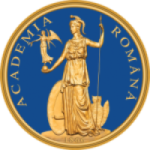Synchronic and Diachronic Perspectives on Romanian Lexical Blending: from the Latin Inherited Lexicon to Present-day English Influence
Lexical blends are new words produced through the fusion of parts from two or more lexemes. Since blending evades morphological rules, there is no consensus on the definition and the limits of this phenomenon. Moreover, theoretical claims are usually grounded on linguistic data from English, and experimental evidence is also scarce. Thus, a unitary account of lexical blending is missing from both Romanian and international linguistics, with intentional blends treated separately from unintentional lexical blends, though there is little empirical support to this separation, and a huge gap between synchronic and diachronic studies.
We aim at filling the gaps in both Romanian and international linguistics with a complex approach, for which we devised three lines of research:
(a) the diachronic approach: we will analyze the blend words recorded in the dictionaries, assess their circulation and identify the conditions of a felicitous blend, i.e. a now accepted fully-fledged word;
(b) a synchronic corpus research: we will identify recent blends that went unrecorded and compare the blending patterns to the results of the diachronic research. We will also seek instances of blend loans and changes in the blending patterns’ productivity that may be attributed to the English influence, since this seems to be the case for other European languages (e.g. Italian, Polish);
(c) a psycholinguistic experimental approach: we will design and apply questionnaires and experiments to observe the production and the processing of lexical blends. The processing experiment will compare the response times of blends against matched controls. The production experiment will target the elicitation of blend-words based on images of blended objects.
By putting together the experimental results, the corpus analysis and the etymological data, we aim to reach a unitary account of lexical blending, and to find the common traits of all the linguistic phenomena that have been treated in isolation until now.
